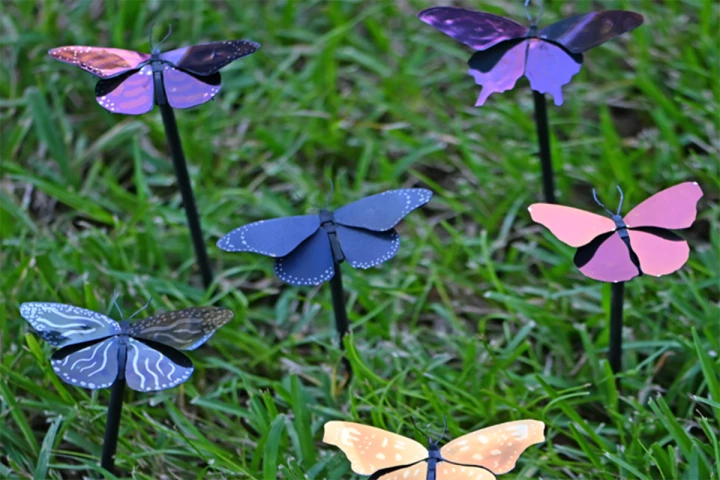Nanostructures
-
Researchers have created a nanoscale electronic ‘tattoo’ that attaches to an individual cell without damaging it. The breakthrough development could be used to monitor cell health and puts us one step closer to getting the jump on disease diagnosis.
-
In a fight against Iron Man, you might be better off betting on Glass DNA Nanolattice Man instead. Engineers have developed a very strong and lightweight new material out of DNA that self-assembles into lattices, and is then coated in glass.
-
Traditional paint gets it color from synthetic pigments, which fade over time and aren't very eco-friendly. There may soon be a better alternative, though, in the form of a paint which incorporates color-producing nanostructures.
-
Autonomous vehicles operate in a complex environment, and recognizing traffic signs is an important part of that. A new microstructured material reflects light in rainbow rings, which can make traffic signs easier for computer vision systems to read.
-
Carbon atoms can form graphene sheets and buckyballs. Scientists have theorized that a third variation should exist with negative curvature, known as schwarzite. An international team has now found a way to create these structures, which may have unusual electrical, magnetic and optical properties.
-
Harvard has reported a breakthrough artificial eye just 30 microns in depth which can exceed the capabilities of the human eye. The technology could make a real impact in all manner of optical fields, including those in cameras, telescopes, microscopes, glasses and even virtual reality.
-
With blinds in front of our windows, we usually have to choose between light and privacy, but “smart glass" can toggle its opacity as needed. Now a University of Pittsburgh team has developed a new type of glass that can switch between hazy and clear in seconds – just add water.
-
The natural world is a constant source of inspiration for scientists and engineers. The latest biologically influenced innovation comes from a team of German researchers who developed a new type of stronger cement inspired by nanostructures found in sea urchin spines.
-
A new flexible material can block various portions of the electromagnetic spectrum while allowing others through. The material has the potential to improve solar cell efficiencies and create window coatings that not only let in visible light and keep out heat, but also block electromagnetic signals.
-
Researchers at the Masdar Institute are creating 3D printed high performance materials with custom-designed mechanical, thermal and electrical properties by manipulating the materials' internal structures.
-
If researchers at RMIT have their way, the amount of time we spend measuring capfuls of liquid, scraping out the lint filter and refolding our duds may soon be slashed thanks to a new coating that cleans fabrics whenever they're exposed to light.
-
Using electroactive polymers and a combination of biological and engineered parts, researchers at the University of Tel Aviv have created a bionic patch for the heart that replaces damaged heart tissue, provides electrical stimulation, and releases medication on demand.
Load More











